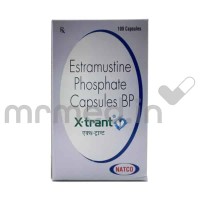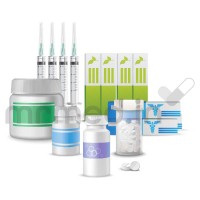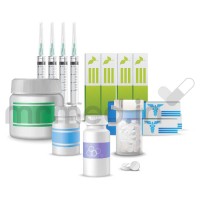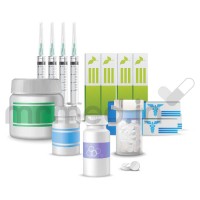Lidofix 2% injection, also known as lidocaine, contains the active ingredient lidocaine hydrochloride. It is a local anesthetic that belongs to the group of medications called amino amide. It is used to produce local anesthesia (numb a specific area) and stop pain being felt in the area of the body where it is locally administered. It is also an anti-arrhythmic agent used to control fast or abnormal heartbeats you might experience after a heart attack. Common side effects of this injection are edema, erythema, skin rashes, and headache.
Do not use Lidofix 2% injection if you are allergic to lignocaine or any of the other ingredients of this medicine. Do not take this medicine if you have an allergic reaction to any local anesthetic medicines. Before initiating the treatment, inform your doctor if you have heart disease, blood disorders, or kidney or liver diseases. Talk to your doctor before using this medicine if you suffer from a breathing disorder, epilepsy, active inflammation, or infection. This medicine must not be used in the eye. Contact your physician immediately if you begin to experience lightheadedness, numbness of your tongue, or a ringing in your ears after receiving this medicine.
Therapeutic Effects of Lidofix 2% Injection
Pregnancy
Inform your physician if you are pregnant, suspecting pregnancy, or planning to get pregnant during the treatment. Your doctor will decide whether to administer this injection.
Breast Feeding
Breastfeeding is not recommended in patients taking Lidofix 2% injection because the medicine passes into the breast milk in small amounts and may harm your baby. Do not breastfeed during the treatment.
Lungs
It is unknown whether Lidofix 2% injection can be used in patients with lung disorders. Consult your doctor if you have any lung diseases before starting the treatment.
Liver
It is unknown whether Lidofix 2% injection can be used in patients with lung disorders. Consult your doctor if you have any lung diseases before starting the treatment.
Alcohol
It is unsafe to drink alcohol while you take Lidofix 2% injection because it may cause damage to your liver.
Driving
It is unsafe to drive while taking Lidofix 2% injection. Do not drive or operate heavy machinery if you experience any side effects, such as dizziness, drowsiness, or blurred vision.
Common
- Swelling in the face and feet
- Skin rashes
- Headache
- Burning sensation in the eye
Serious
- Severe skin reactions
- Blood disorders
Lidofix 2% injection does not cause pain except when it is given as spinal anesthesia. This Injection usually relieves pain in conditions like neuropathic pain and pain after surgery.
Lidofix 2% injection should not be given to patients who are allergic to it, have decreased blood volume (hypovolemia), or have complete heart block. If the solution also contains adrenaline, it should not be injected into a vein or used in areas such as fingers, toes, ears, nose, or penis, as the blood supply to these areas may not be sufficient.
Lidocaine (also known as Lignocaine), are different name for the same medicine. Both are the same medicine that belongs to the category of amino amides. It is used as a local anesthetic and anti-arrhythmic agent.
Lidofix 2% injection, as an anti-arrhythmic medication, works by blocking sodium channels and thus decreasing the rate of contractions of the heart. The mechanism of action of this injection for local or regional anesthesia is by reversible blockade of nerve fiber impulse propagation.
The serious side effects of Lidofix 2% injection are severe skin reactions and Methemoglobinemia (blood disorder).
Molecule Name: Lignocaine | Therapeutic Class: Local anesthetics, Anti-arrhythmic agents |
Pharmacological Class: Amino Amide | Indications: 1. Used as local anesthetics 2. Used to control fast and abnormal heartbeats |









